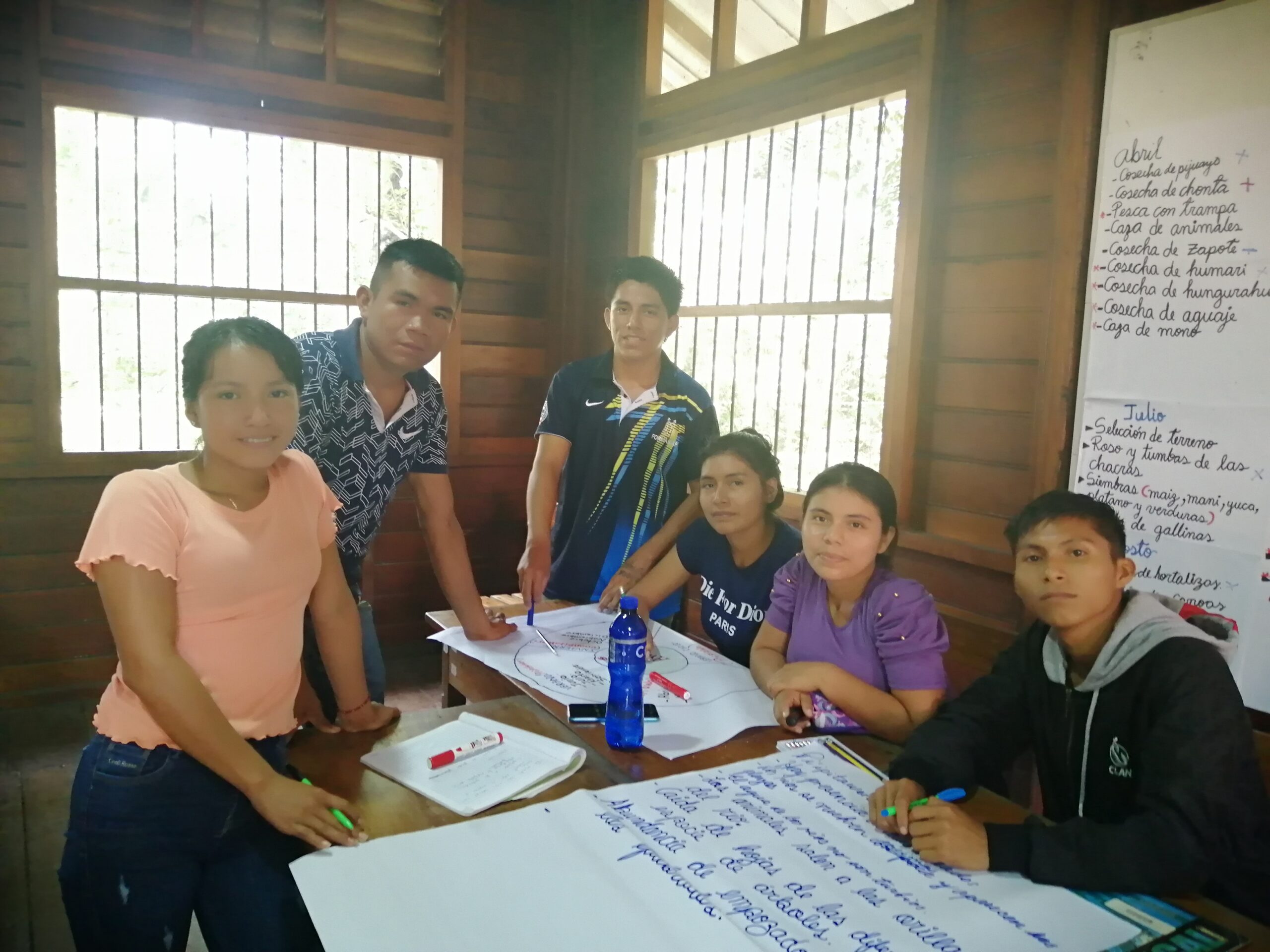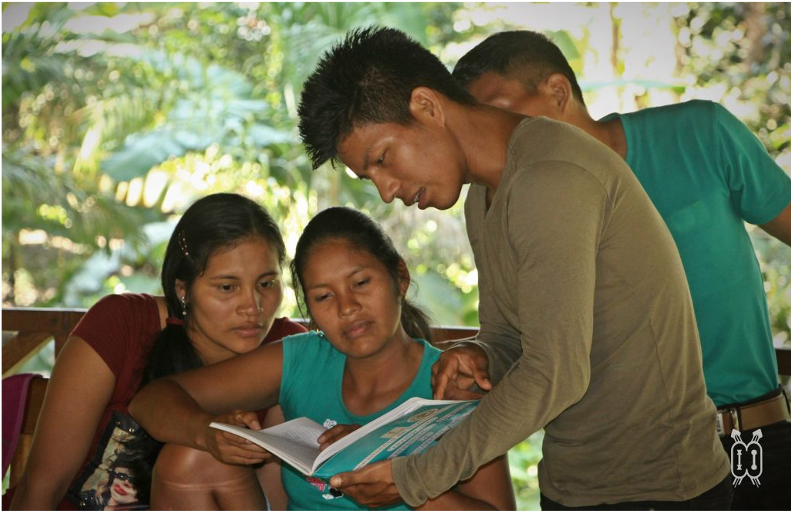Over half of Peru’s land area is rainforest. Yet the state of the rainforest and its national and global significance is still very low on the school curriculum in Peru. The CICED project Quality education for a sustainable future and full living in the Peruvian Amazon is doing something about this.
The partner, Programa de Formación de Maestros Bilingües de la Amazonia Peruana – or FORMABIAP – trains young people from rainforest areas to become primary school and kindergarten teachers. As part of the project, students will integrate workshops and productive activities in the education and in the internship villages. This increases their knowledge of sustainable coexistence with the rainforest and gives them the tools to understand and deal with the socio-environmental issues that threaten the diverse life of the rainforest.
The first phase of the project focuses on testing different ways of building knowledge about sustainable coexistence with the rainforest. In April, I visited the project and got an insight into some of the methods FORMABIAP is testing to give student teachers a foundation in sustainable coexistence with the rainforest.
Five initiatives to learn about sustainable coexistence with the rainforest
When I arrived in Formabiap just after Easter, the new school year was just about to start. The project team, together with partner Instituto Chaikuni, agreed on five educational elements to be piloted over the next three years as part of strengthening students’ understanding of coexistence with the rainforest. The training elements are:
- Reforestation (Reforestación)
- Holistic agriculture (related to permaculture) (Chacras integrales)
- Handling of solid waste (Manejo de desechos sólidos)
- Fish farm (piscigranja)
- Biavl (crianza de abeja)
Each student will participate in two educational elements during their studies. The activity you have signed up for, you will be co-responsible for. Part of the responsibility is to help build the activity in the teacher training program. In addition, students must gather knowledge in the field during their internship or home periods. For example, they will conduct small baseline surveys in their areas within the theme and experiment with different working, caring and problem-solving methods. This way, students not only build important knowledge in their field, but also learn how to relate that knowledge and make decisions about next steps.
Revitalizing knowledge about rainforest plants, herbs and trees
“Together with your family, find out which timber trees, fruit trees, palm trees, medicinal plants are hard to find in the area around your village”. This was one of the fieldwork assignments given to the Formabiap student teachers when they went to their villages for an internship at the end of 2022. The main heading of the fieldwork this time was “Recuperación de la biodiversdad”, i.e. “biodiversity restoration” and the purpose of the assignment was to identify and protect endangered plant and tree species.
Every year, when students go back to their villages or are sent on an internship at a bilingual, intercultural school, they are given a series of survey questions. Through interviews with the village elders and parents, and by participating in village activities, the young student teachers recover important knowledge that would otherwise be lost, such as the properties and growing conditions of plants. They document this knowledge in field journals with pictures, drawings and text, which they take to the teacher training course, where they systematize their findings and hear and read more about the plants together with teachers, older experts from the villages and each other.
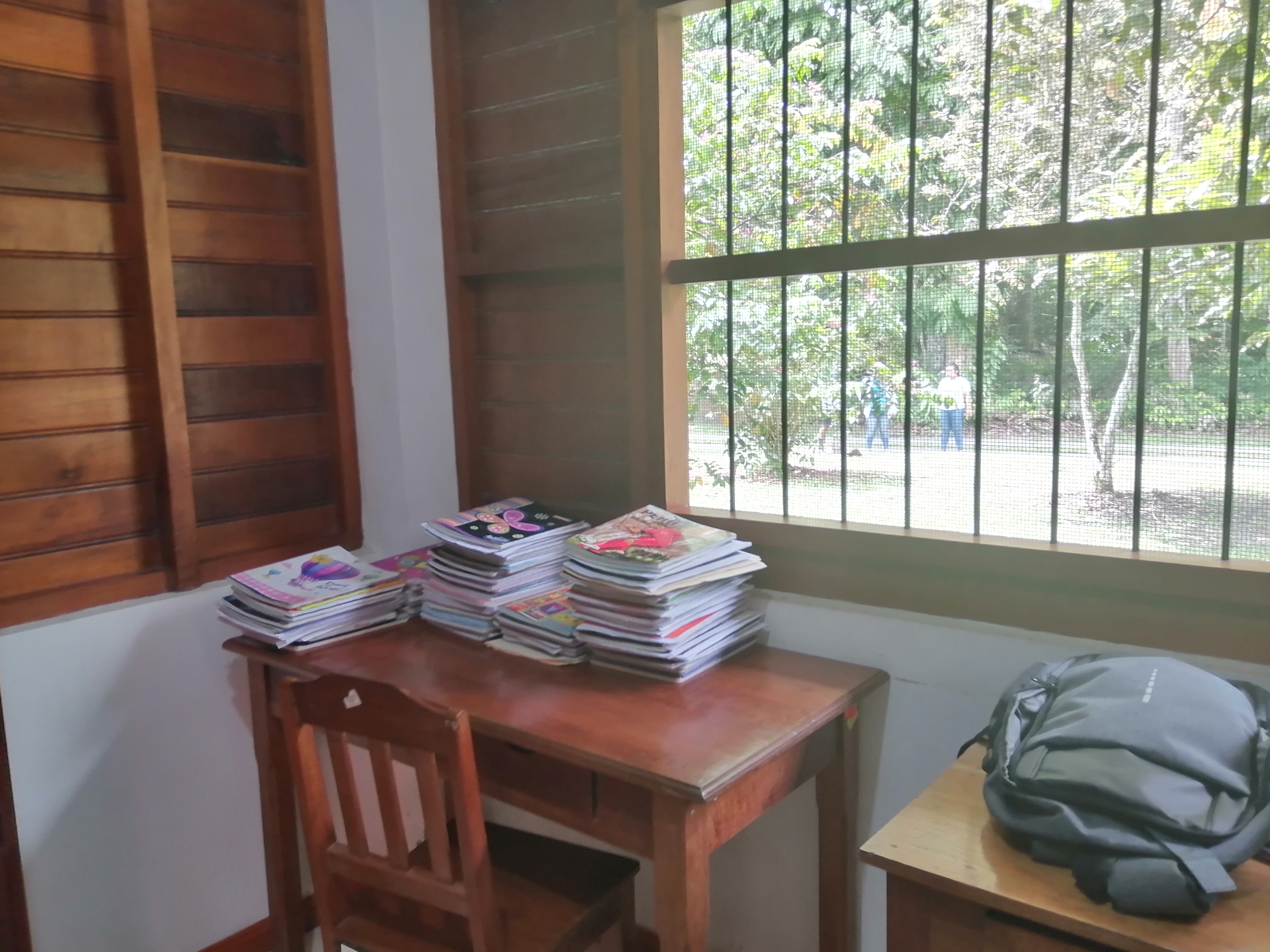
Many field reports are written from the students’ visits to the villages. The reports are included as teaching aids in teacher training.
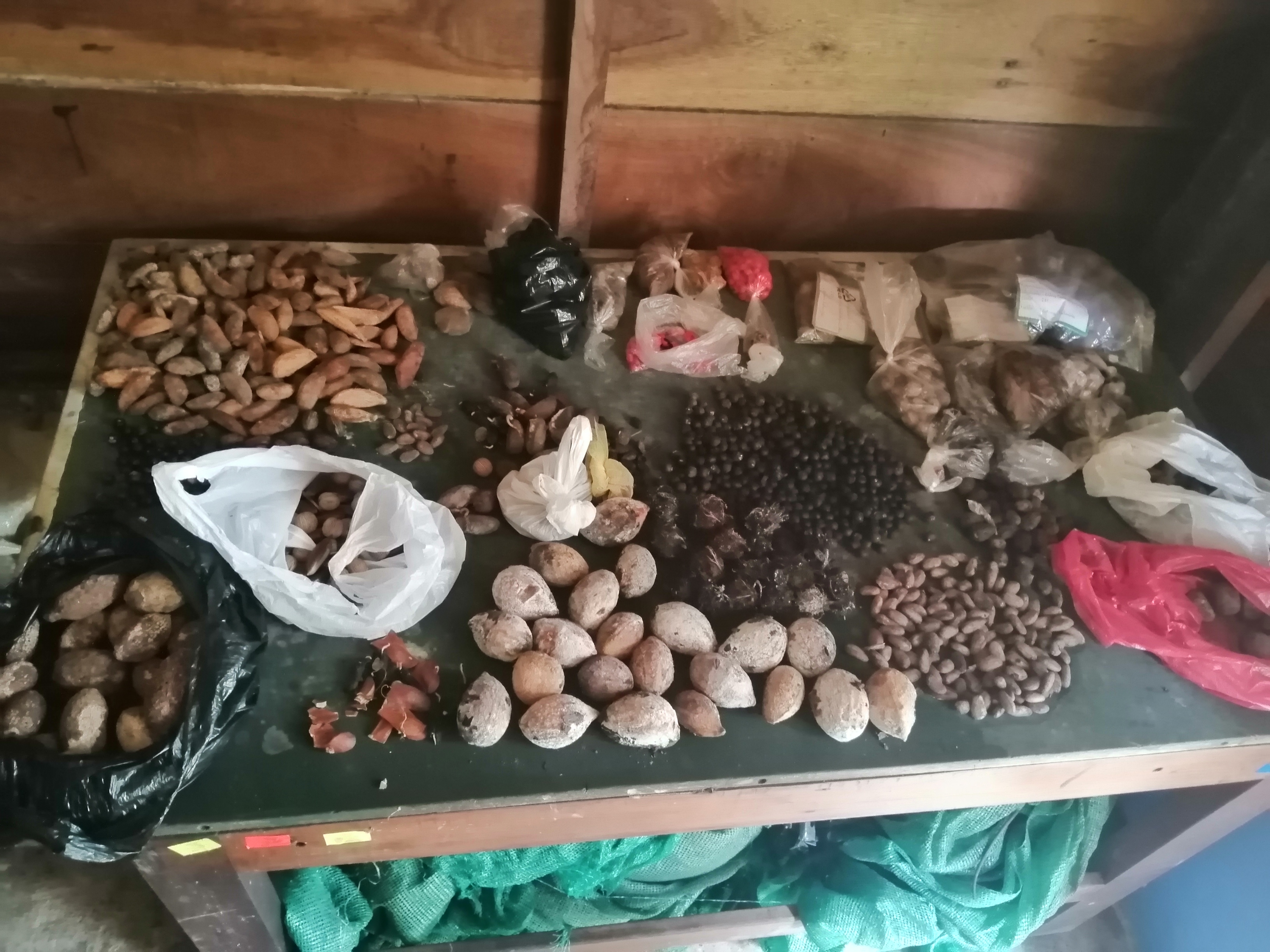
Student teachers collect seeds in the villages for teaching and planting
Mapping productive activities among shawi, kukama-kukamiria and quichwa
One of the educational activities I attended during my visit was a workshop for 19 student teachers, who were in their fifth and ninth semesters and came from Shawi, Kukama-Kukamiria and Quichwa areas. The purpose of the workshop was to initiate a mapping process of the productive activities that exist in these areas and allow students to discuss whether these activities support or conflict with a sustainable coexistence with the rainforest. In addition, the workshop for the students should lead to the selection of 6 curriculum themes from which they could build their teaching.
Every day, students worked in language groups, i.e. there was a Shawi group, a Kukama-Kukamiria group and a Quichwa group. On the first day, the groups had to create a calendar that listed all the productive activities associated with the respective months. The activities were then sorted by how much or little they were practiced in the areas, which provided a good opportunity to talk about what development they could see in the villages and discuss the pros and cons of this development.
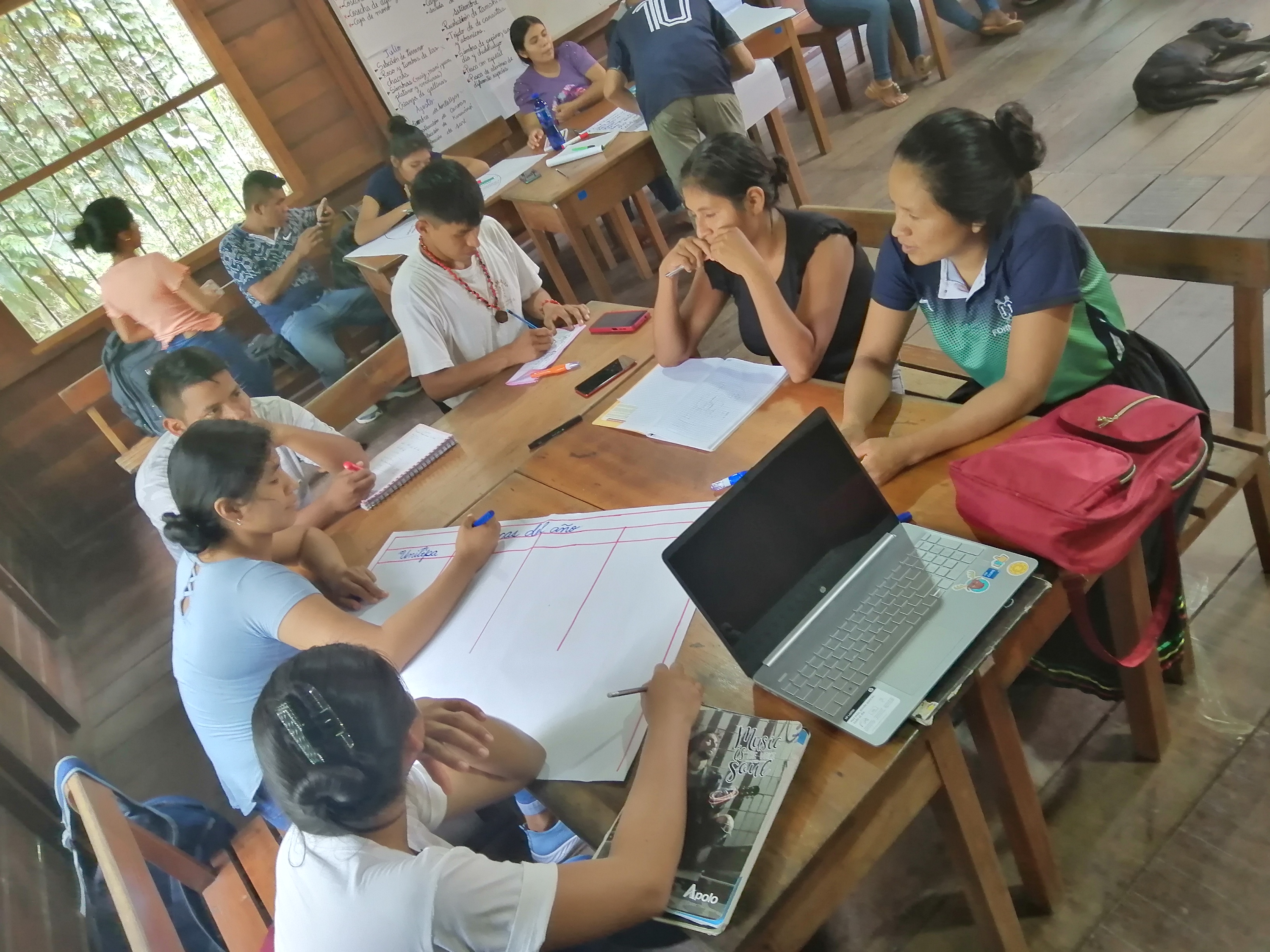
A next step in the process was to incorporate the local productive activities into the curriculum. Therefore, each language group had to select six activities that they considered to be key activities in their area. This number corresponds to the number of overarching themes a primary school teacher typically covers in a school year. After selecting themes, the groups immersed themselves in describing what the children’s role was typically in the different productive activities.
As a final step, students should try to formulate learning objectives for primary school students from the subjects that fit with the content and purpose and cultural context of the activity.
Diversifying the curriculum
In the long run, this workshop and a series of local workshops held in the areas in April/May with local education authorities and village representatives should provide important input for a so-called “diversification” of the national curriculum for bilingual intercultural primary school in rainforest areas.
Diversification is the ability to adapt the national curriculum to topics and issues that arise from local conditions and are prioritized by local stakeholder groups, such as parents, indigenous organizations, etc.
Diversification is now the tool needed to legitimize the project’s initiatives and incorporate them into the primary school curriculum for bilingual intercultural education in Shawi, Kukama-Kukamiria and Quichwa areas.
